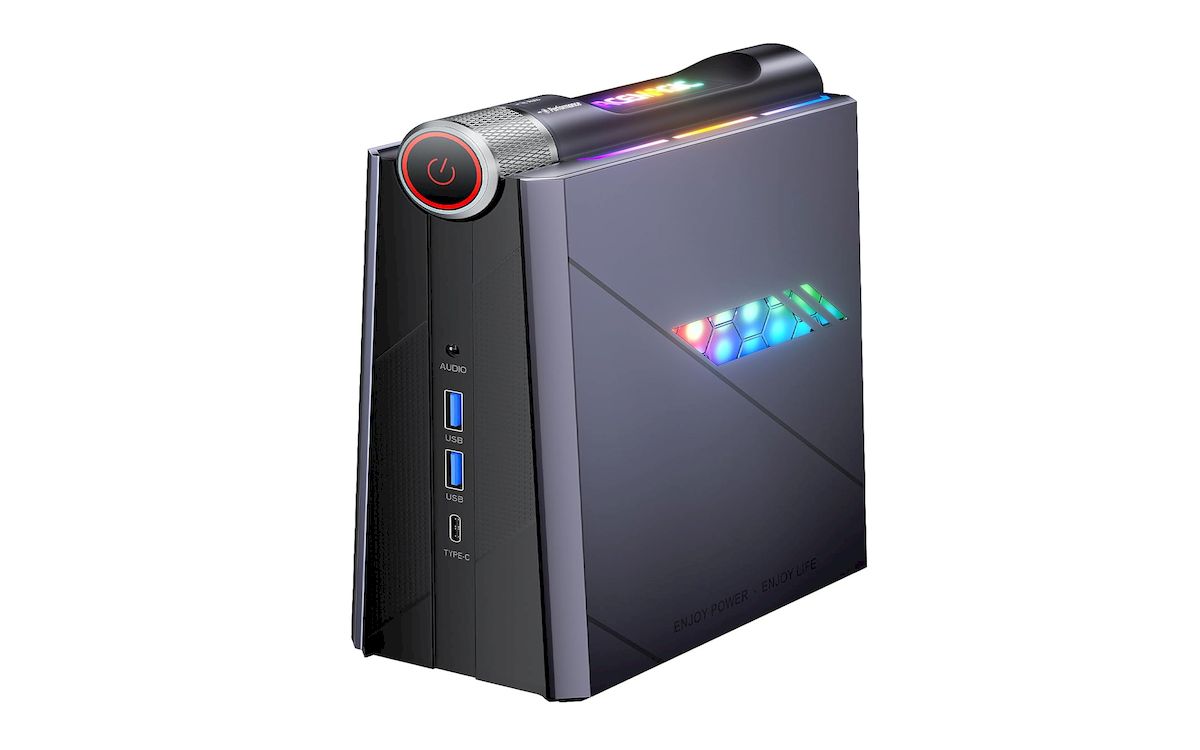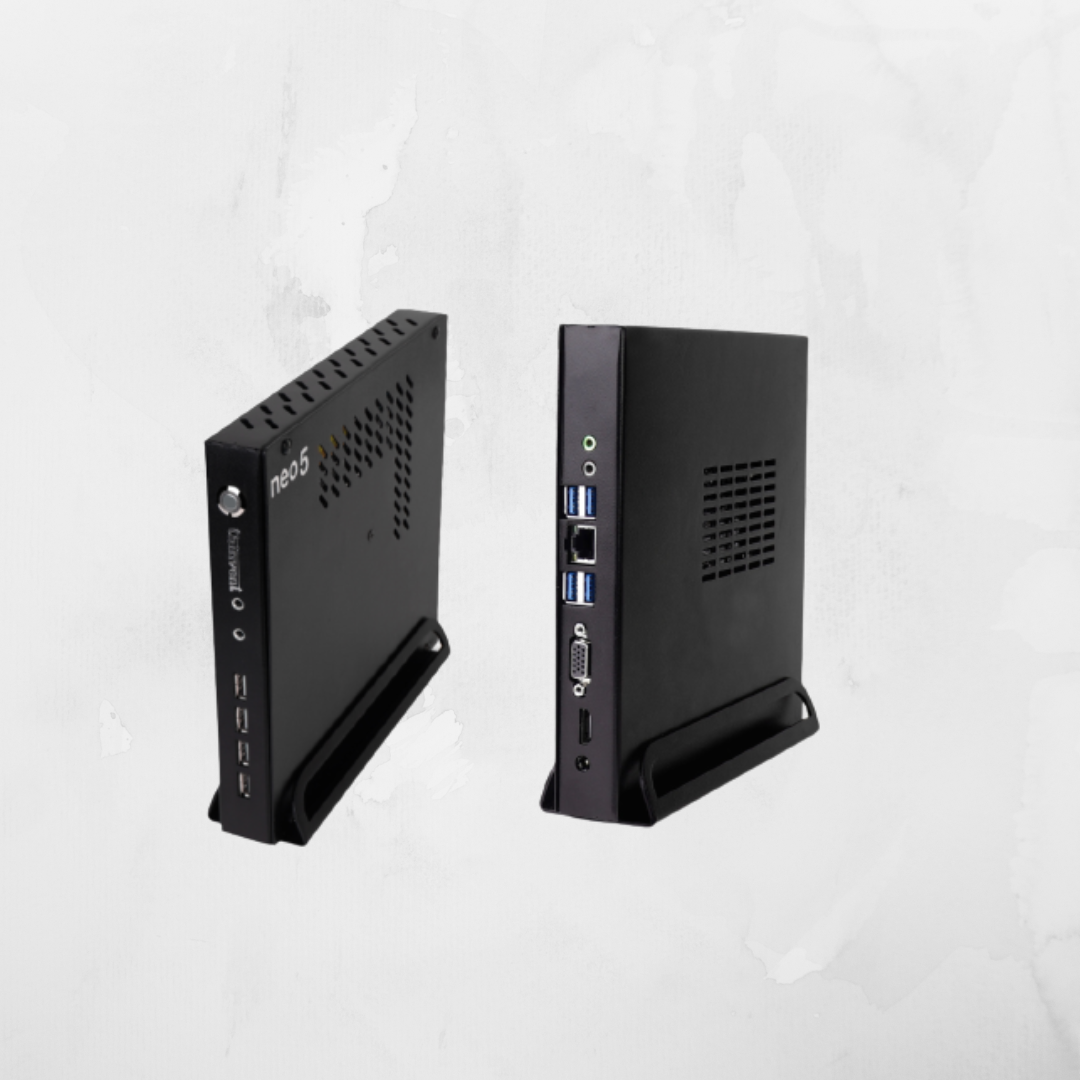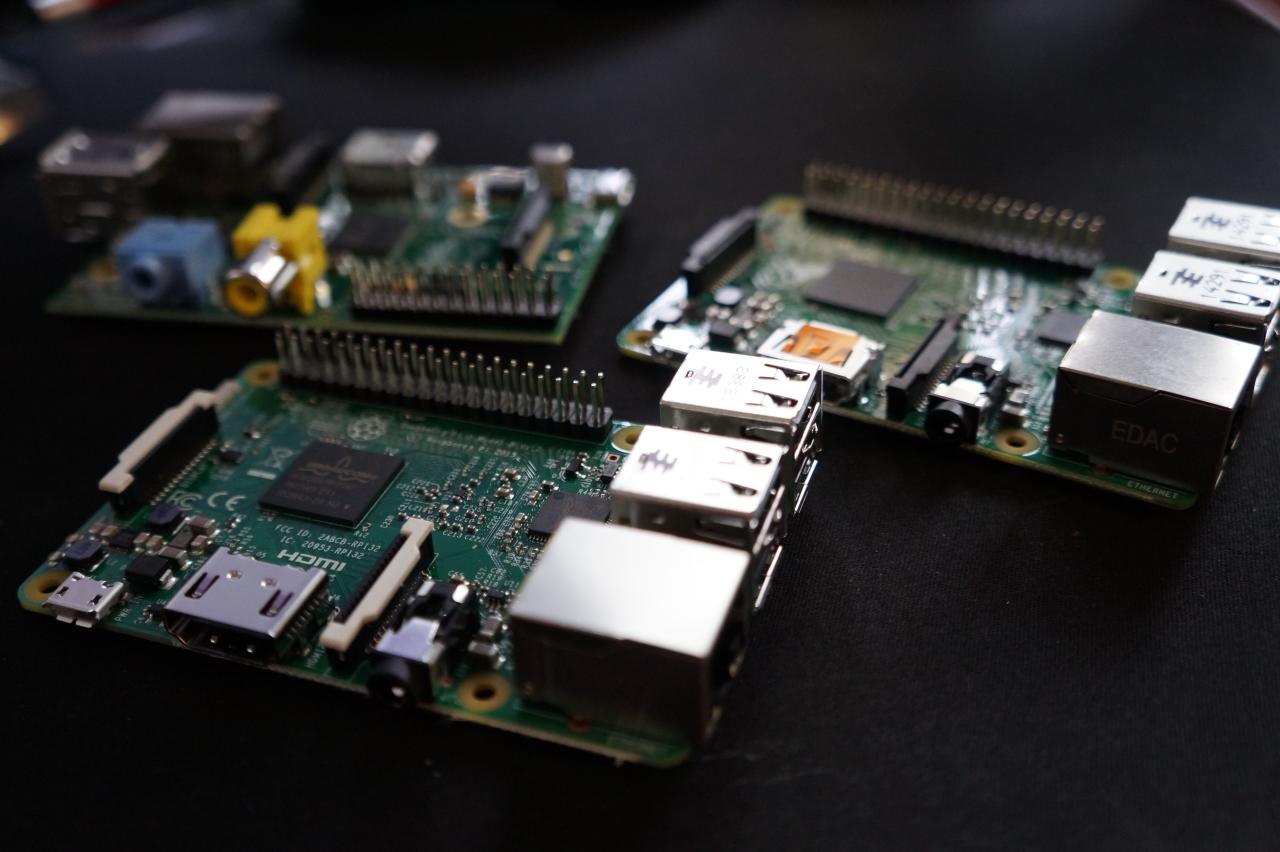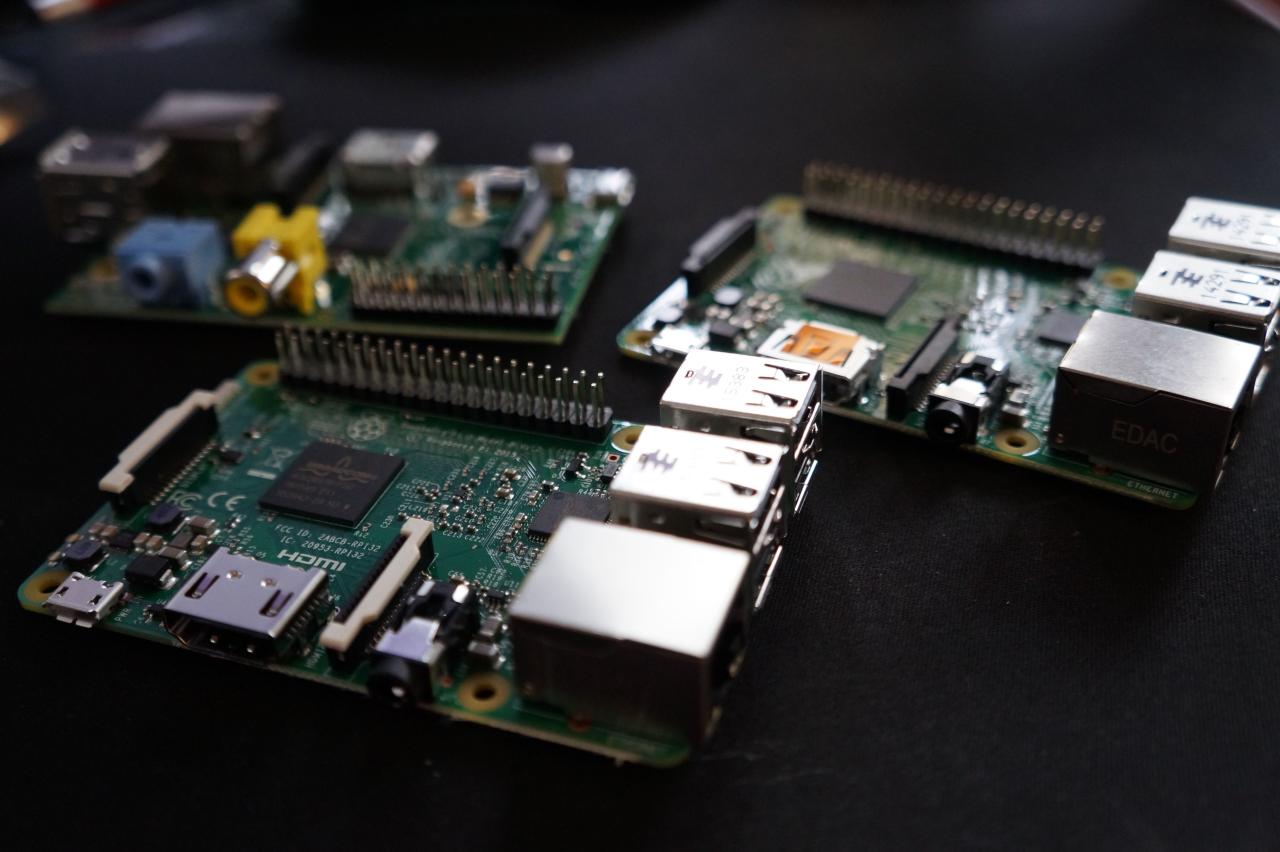Tiny PCs are rapidly gaining popularity, offering powerful computing capabilities in remarkably compact form factors. These miniature marvels are redefining the boundaries of desktop computing, providing a compelling alternative to traditional PCs, laptops, and even servers for specific use cases. From home offices to industrial settings, their versatility and efficiency are transforming how we approach computing.
This comprehensive guide explores the world of tiny PCs, delving into their history, hardware specifications, software compatibility, and various applications. We’ll also compare them to other PC types, examine future trends, and provide a buyer’s guide to help you navigate the exciting world of compact computing.
Introduction to Tiny PCs
Tiny PCs are compact computer systems designed for space-saving installations and diverse use cases. They combine the functionality of a full-fledged desktop PC into a remarkably small form factor, often utilizing miniaturized components and optimized hardware. This allows for flexibility in placement and integration into various environments, from home offices to industrial settings.These systems have evolved significantly over time, moving from niche products to mainstream options, particularly in the realm of gaming and professional applications.
Their continuous improvement in performance and feature set has made them increasingly attractive to users seeking both powerful capabilities and space-saving designs.
Key Features and Historical Context
Tiny PCs represent a significant evolution in computer design, driven by the need for smaller, more adaptable computing solutions. Early iterations focused on achieving maximum performance within limited physical space, using innovative cooling solutions and power management techniques. Over time, the availability of smaller components, more efficient power supplies, and advanced thermal management technologies have enabled the creation of even more powerful and versatile tiny PCs.
Modern designs often prioritize energy efficiency and quiet operation, further enhancing their appeal for various applications.
Available Form Factors
Tiny PCs are available in a range of form factors, each catering to specific needs and applications. Common form factors include mini-ITX, NUC (Next Unit of Computing), and various custom designs. The mini-ITX form factor is a widely recognized standard for small desktop PCs, characterized by its compact size and extensive compatibility with a wide array of components.
NUCs, known for their sleek design and integrated components, are popular choices for specific applications, such as home theaters and media centers. Custom designs are increasingly common, allowing for specific customization to match precise requirements.
Typical Use Cases
Tiny PCs are utilized in diverse settings, leveraging their portability and compact size. These include home offices, where their compact size can be a significant advantage for space-constrained setups. In gaming environments, their low profile and powerful performance allow for a more streamlined gaming setup. Furthermore, tiny PCs are well-suited for industrial automation and embedded systems, where space and power efficiency are paramount.
Professional users, such as video editors and graphic designers, appreciate their compact size and the potential for powerful configurations.
Comparison of Tiny PC Form Factors
| Form Factor | Size (approx.) | Ports | Expandability |
|---|---|---|---|
| Mini-ITX | Typically around 17cm x 17cm | Various, including USB, Ethernet, HDMI, and audio | Generally good, with various expansion cards and add-ons available |
| NUC | Very compact, often under 10cm x 10cm | Typically fewer ports than mini-ITX, but often with integrated graphics | Limited expandability compared to mini-ITX, but typically offers a variety of integrated options |
| Custom Designs | Highly variable, tailored to specific requirements | Dependent on the specific design | Highly customizable and adaptable |
The table above provides a general comparison of common tiny PC form factors, highlighting their key differences in size, connectivity, and expandability. Careful consideration of these factors is essential when selecting a tiny PC for a particular application.
Hardware Specifications
Tiny PCs, despite their compact size, offer a surprising range of processing power and features. Their hardware specifications often dictate their capabilities and intended use cases, from basic tasks to more demanding applications. Understanding these specifications is crucial for selecting the right tiny PC for a specific need.
Typical Components
Tiny PCs typically incorporate a central processing unit (CPU), random access memory (RAM), and storage. The CPU is the brain of the device, handling calculations and instructions. RAM facilitates quick access to data, enabling smooth multitasking. Storage provides persistent data storage, retaining files and applications even when the PC is turned off.
Storage Options
Storage options in tiny PCs primarily fall into two categories: solid-state drives (SSDs) and hard disk drives (HDDs). SSDs offer significantly faster read and write speeds compared to HDDs, resulting in quicker boot times and application loading. HDDs, while generally slower, provide more storage capacity at a lower cost. The choice between SSD and HDD depends on the user’s priorities—speed versus capacity.
Graphics Processing Units (GPUs)
The graphics processing unit (GPU) is responsible for rendering images and video. The inclusion and type of GPU in a tiny PC significantly impact its suitability for graphics-intensive tasks. Integrated GPUs, often found in budget-friendly models, offer basic graphical capabilities. Dedicated GPUs, on the other hand, provide enhanced performance for gaming and video editing. The type of GPU is an important factor in determining the PC’s suitability for particular applications.
Power Consumption
Power consumption varies widely across different tiny PC models. Factors such as the CPU’s power, RAM’s activity, and the presence of a dedicated GPU influence energy usage. Models optimized for low power consumption are suitable for battery-powered applications or environmentally conscious users. High-performance models, while offering greater processing power, will typically consume more energy.
Comparison Table of Popular Tiny PCs
| Tiny PC Model | CPU | RAM (GB) | Storage (SSD/HDD) | GPU | Power Consumption (Watts) |
|---|---|---|---|---|---|
| PC1 | Intel Atom | 4 | 256GB SSD | Integrated | 10-15 |
| PC2 | AMD Ryzen | 8 | 512GB SSD | Integrated | 15-20 |
| PC3 | Intel Core i3 | 8 | 1TB HDD | Integrated | 18-25 |
| PC4 | Intel Core i5 | 16 | 512GB SSD | Integrated/Dedicated | 20-30 |
| PC5 | AMD Ryzen 5 | 16 | 1TB SSD | Dedicated | 25-40 |
Note: Specifications may vary based on specific configurations and manufacturers.
Software Compatibility
Tiny PCs, despite their compact form factor, offer a surprisingly wide range of software compatibility. This versatility allows users to leverage their computational power for diverse tasks, from everyday productivity to specialized applications. Understanding the nuances of software compatibility is crucial for maximizing the potential of these devices.Operating systems play a pivotal role in determining which software runs seamlessly on a tiny PC.
Different operating systems have varying compatibility requirements and software libraries, which can affect the performance and functionality of the applications.
Supported Operating Systems
Various operating systems are compatible with tiny PCs. Windows, Linux, and ChromeOS are common choices. The specific operating system supported depends on the manufacturer and the model of the tiny PC. This often involves the tiny PC’s processor architecture and the available RAM.
Software Applications
Many software applications, from productivity suites to gaming titles, are compatible with tiny PCs. The performance, however, might vary depending on the application’s resource requirements and the tiny PC’s specifications. For instance, resource-intensive games may run slower on a tiny PC compared to a traditional desktop PC with more powerful hardware. Conversely, lightweight applications and productivity tools often run smoothly on tiny PCs.
Performance Comparison
A crucial aspect to consider is the performance difference between tiny PCs and traditional PCs. Software performance on tiny PCs is generally slower for resource-intensive applications like video editing software or complex simulations. However, lightweight applications such as word processing, web browsing, or basic photo editing, typically run efficiently on a tiny PC. This performance difference stems from the tiny PC’s more modest hardware compared to a traditional PC.
Advantages and Disadvantages of Using Specific Software on Tiny PCs
Using software on tiny PCs has both advantages and disadvantages. The advantages often relate to portability, ease of use, and cost-effectiveness. The disadvantages stem from the limitations imposed by the hardware constraints of the tiny PC. For example, using resource-heavy software might lead to reduced performance or even system instability.
Operating System Compatibility Table
The table below provides a general overview of the operating system compatibility across various tiny PC models. Note that this is not exhaustive and specific compatibility can vary.
| Tiny PC Model | Supported Operating Systems |
|---|---|
| Model A | Windows 10/11, Linux (Ubuntu, Debian), ChromeOS |
| Model B | Windows 10/11, Linux (Ubuntu), ChromeOS |
| Model C | Linux (Ubuntu, Fedora), ChromeOS |
| Model D | Windows 10/11, Linux (various distributions), ChromeOS |
Applications and Use Cases
Tiny PCs, with their compact size and powerful capabilities, are proving to be a versatile solution for a wide array of applications. Their low power consumption and affordability make them ideal for various use cases, from home automation to industrial control systems. They offer a compelling alternative to larger, more expensive computers in situations where space and power are constrained.The advantages of tiny PCs extend beyond their physical dimensions.
Their efficient hardware and robust software compatibility allow for seamless integration into existing systems, making them easily deployable and manageable. These features, combined with their relatively low cost, position them as a practical choice for diverse applications.
Suitable Applications
Tiny PCs are exceptionally well-suited for a broad spectrum of applications. Their compact design, low power consumption, and affordability make them ideal for situations where space and power are at a premium. They are particularly beneficial in environments where larger computers are impractical or unnecessary.
Advantages in Specific Scenarios
Tiny PCs excel in environments with limited space and power. Their compact form factor minimizes the footprint required for installation, while their energy efficiency reduces operational costs. Furthermore, their flexibility and adaptability make them a viable alternative to larger, more expensive systems.
Examples in Different Industries
Tiny PCs are finding their way into numerous industries. In retail, they are used for point-of-sale systems, providing efficient and reliable transaction processing. In manufacturing, they are employed in industrial automation, controlling machinery and gathering data. Educational institutions use them for interactive learning environments, allowing students to access advanced software without the need for bulky equipment. The potential applications are vast and span across diverse sectors.
Replacing Larger Computers
In tasks where processing power requirements are moderate, tiny PCs can effectively replace larger computers. For instance, in simple data analysis or basic automation applications, the performance of a tiny PC is often sufficient, eliminating the need for more complex and costly systems. This substitution can lead to significant cost savings and reduced environmental impact.
Table of Applications in Different Fields
| Field | Application | Advantages |
|---|---|---|
| Retail | Point-of-sale systems, inventory management | Compact design, low power consumption, cost-effectiveness |
| Manufacturing | Industrial automation, data acquisition | Reliable performance, adaptability to specific needs, efficient use of space |
| Education | Interactive learning environments, multimedia displays | Affordable access to advanced software, portability, low energy consumption |
| Home Automation | Smart home devices, lighting control, security systems | Integration with existing systems, easy setup, minimal footprint |
| Data Acquisition | Environmental monitoring, scientific research | Robust data logging capabilities, remote access, cost-effective solution |
Comparison with Other PC Types

Tiny PCs represent a compelling alternative to traditional desktop PCs, laptops, and servers, each with unique strengths and weaknesses. Understanding these distinctions is crucial for selecting the right PC for a specific task or budget. This comparison examines the cost, performance, and overall value proposition of each type.Tiny PCs occupy a space between traditional desktops and laptops in terms of both form factor and functionality.
They offer a balance between portability and power, often at a more accessible price point than their larger counterparts.
Cost Comparison
Tiny PCs generally fall into a price range between desktop PCs and laptops, offering a more budget-friendly alternative to a fully-featured desktop or the high cost of a high-performance laptop. This cost advantage stems from their compact design, which reduces manufacturing costs and potentially lowers component prices. However, the price varies significantly depending on the specific components and features.
Performance Comparison
Performance disparities exist across different PC types. Desktop PCs, typically featuring higher-end components, often boast superior processing power and graphics capabilities. Laptops, while increasingly powerful, are usually constrained by their smaller form factor and thermal management limitations. Servers, designed for heavy workloads and multitasking, possess robust processing capabilities but come with a significantly higher price tag. Tiny PCs aim to bridge the gap between these options, offering a balance between cost-effectiveness and decent performance.
The performance of a tiny PC depends heavily on the chosen components, mirroring the flexibility and customization of a desktop.
Advantages and Disadvantages of Each PC Type
- Desktop PCs: Desktop PCs offer the highest potential for customization and performance, with easily upgradeable components. However, their large size and lack of portability can be limiting. They also tend to have a higher initial cost.
- Laptops: Laptops are portable and convenient, but their performance is often limited by their smaller form factor and heat dissipation. Their cost can vary greatly depending on the level of processing power and features.
- Servers: Servers are optimized for handling heavy workloads and multiple users simultaneously. Their performance is usually exceptional, but they are significantly more expensive than desktop or laptop PCs, and their use cases are limited to specific applications.
- Tiny PCs: Tiny PCs strike a balance between portability and performance, often at a lower cost than comparable desktop PCs. Their compact size and ease of integration make them ideal for small workspaces or when space is limited. However, their performance is generally lower than a desktop PC with the same budget. Furthermore, customization options might be more restricted than with a desktop PC.
Comparative Table
| PC Type | Size | Performance | Cost | Advantages | Disadvantages |
|---|---|---|---|---|---|
| Tiny PC | Compact | Moderate | Low-Medium | Portability, Cost-effective, space-saving | Limited upgrade options, potential performance limitations |
| Desktop PC | Large | High | High | High performance, customization, upgradeability | Large size, limited portability |
| Laptop | Portable | Medium-High (depending on model) | Medium-High | Portability, convenience | Limited performance compared to desktop, potential heat issues |
| Server | Variable | Very High | Very High | Robust performance, multitasking | Extremely high cost, limited portability, specialized use cases |
Future Trends

Tiny PC technology is poised for significant advancements in the coming years, driven by the ongoing demand for compact, powerful computing solutions. This evolution will likely involve both hardware and software innovations, potentially leading to even smaller form factors and a wider range of applications.The future of tiny PCs will be shaped by a combination of factors, including the need for portability, the ongoing miniaturization of components, and the development of new software optimized for these devices.
These factors will drive innovation and ultimately lead to more powerful, versatile, and affordable tiny PC options.
Potential Hardware Innovations
The relentless pursuit of miniaturization will continue to impact tiny PC hardware. Expect to see advancements in component density, leading to more powerful processors and graphics cards packed into smaller spaces. Improved power efficiency will be crucial, enabling longer battery life for portable models and reduced energy consumption for stationary units. The integration of new, energy-efficient storage technologies, such as solid-state drives (SSDs) with even higher storage capacities, will be a key development.
Furthermore, the emergence of specialized hardware tailored for specific applications, like machine learning or data acquisition, is anticipated.
Software Compatibility and Applications
The development of software tailored for tiny PCs will be vital to unlock their full potential. Existing operating systems, such as embedded Linux distributions and specialized lightweight versions of Windows, will likely be further optimized for the constraints of these devices. The development of new software frameworks and programming languages optimized for tiny PC hardware will allow developers to create a wider range of applications.Examples of future applications include more sophisticated IoT (Internet of Things) gateways, powerful embedded systems for industrial automation, and specialized devices for educational or recreational purposes.
The growing demand for edge computing will further stimulate development in this area.
Potential for Even Smaller Form Factors
Miniaturization efforts will continue, aiming for even smaller form factors. This trend will likely involve advancements in packaging technologies, allowing for the integration of more components into increasingly smaller enclosures. The use of flexible circuit boards and new manufacturing processes could contribute to further size reductions. This could make tiny PCs even more portable and potentially open up new applications in areas like wearable technology and embedded systems.
Future Applications
The applications of tiny PCs are diverse and will continue to expand. Possible future applications include:
- Specialized Embedded Systems: Tiny PCs can serve as the brains of various embedded systems, including industrial automation controllers, medical devices, and automotive components. This specialized application will push the boundaries of design for these small devices.
- IoT Gateways: Tiny PCs will act as hubs for collecting and processing data from numerous sensors in various applications, from smart homes to agricultural monitoring. The efficiency of these devices will be critical for the continued growth of the IoT market.
- Portable Educational Tools: These compact devices will offer affordable and portable educational resources for students in various fields. The lightweight and compact nature of these tools will allow for easier portability, access, and learning experiences.
Summary of Future Features and Improvements
| Feature | Improvement | Impact |
|---|---|---|
| Processor | Increased processing power, lower power consumption, and higher clock speeds | Improved performance and efficiency in a smaller footprint |
| Storage | Higher storage capacity, faster read/write speeds, and greater reliability | Increased data handling capacity for demanding applications |
| Operating System | More lightweight and optimized for resource-constrained environments | Enhanced stability and responsiveness in tiny PC environments |
| Form Factor | Further miniaturization, flexible designs, and new packaging technologies | Enhanced portability and integration into various applications |
| Applications | Specialized software frameworks, new programming languages, and tailored solutions for diverse use cases | Enabling the development of new and innovative applications |
Tiny PC Buyer’s Guide

Choosing the right tiny PC can be a rewarding experience, but it’s crucial to understand your needs and carefully consider various factors. This guide will help you navigate the options and select a tiny PC that perfectly fits your requirements, whether for home use, light productivity, or even specialized tasks.Selecting the ideal tiny PC involves careful consideration of your budget, desired performance, and the specific features you need.
By understanding these key factors, you can make an informed decision and avoid potential pitfalls. Thorough research and careful evaluation of different models, along with understanding the nuances of software compatibility, will also play a critical role in this process.
Budget Considerations
Budget is a significant factor in choosing a tiny PC. Different models have varying price points, reflecting the components and features included. Lower-priced models often compromise on performance, while higher-priced models offer more robust processing power and memory. Researching the typical price ranges for various models within your desired performance class is important.
Performance Requirements
The performance capabilities of a tiny PC are crucial. Factors like the processor speed, RAM capacity, and storage options directly impact the responsiveness and efficiency of the machine. Determine the tasks you intend to perform on the tiny PC. Heavy multitasking or resource-intensive applications will require more powerful hardware than basic web browsing or light document editing.
Features and Functionality
Tiny PCs often come with a range of features that can influence your choice. Consider the included ports, connectivity options, and any specialized functionalities like built-in Wi-Fi or Bluetooth. Understanding the specific features relevant to your needs is key.
Researching Models and Reviews
Thorough research is essential to understanding the different models and their strengths and weaknesses. Reading reviews from reputable sources can provide valuable insights into the performance, reliability, and user experience of various tiny PCs. Look for reviews that address specific tasks you plan to perform on the tiny PC.
Checklist for Purchasing
Before making a purchase, carefully consider these questions:
- What tasks will the tiny PC primarily be used for?
- What is your budget, and what are you willing to spend?
- What performance level is required to meet your needs (e.g., multitasking, video editing)?
- What features are essential, such as specific ports, connectivity options, or specialized functionalities?
- What is the warranty and return policy of the vendor?
- Are there any potential compatibility issues with the software or peripherals you intend to use?
Factors to Consider
Understanding the key factors involved in purchasing a tiny PC is crucial for a successful purchase. The following table summarizes these factors for easy reference.
| Factor | Description | Importance |
|---|---|---|
| Budget | The allocated financial resources for the purchase. | Crucial for selecting a suitable model within affordability. |
| Performance | Processing power, RAM, storage capacity. | Determines the responsiveness and efficiency of the tiny PC. |
| Features | Ports, connectivity options, specialized functionalities. | Influences the compatibility and functionality of the tiny PC. |
| Software Compatibility | The compatibility of the tiny PC with the intended software. | Ensures seamless operation of desired applications. |
| Reviews and User Feedback | Information from other users about the product. | Provides insights into performance, reliability, and user experience. |
Wrap-Up
In conclusion, tiny PCs represent a compelling evolution in computing. Their compact size, impressive performance, and diverse applications make them a versatile option for various needs. While their performance may not always match that of larger PCs, they excel in specific situations. Whether you’re looking for a powerful yet space-saving workstation or a cost-effective solution for a particular task, tiny PCs are worth considering.
The future looks bright for these compact powerhouses, promising even more innovative applications and smaller form factors in the years to come.
FAQ Explained
What are the typical power consumption differences between various tiny PC models?
Power consumption varies significantly depending on the CPU, GPU, and other components. Lower-end models can use as little as 15 watts, while more powerful configurations might draw up to 60 watts or more. Careful consideration of your power needs is essential.
What operating systems are commonly supported by tiny PCs?
Most tiny PCs support Windows, Linux, and in some cases, macOS. However, the specific versions and compatibility can vary between models.
How do tiny PCs compare in cost to desktop PCs and laptops?
Tiny PCs generally fall within a price range between desktop PCs and laptops, offering a balance between cost and performance. They often present a more affordable solution for specific tasks than full-size desktop PCs, while also offering greater portability than a desktop.
What are some common use cases for tiny PCs in industrial settings?
Tiny PCs are well-suited for embedded systems, industrial automation, and data acquisition applications. Their compact size and robustness make them ideal for environments where space is limited and reliability is critical.






